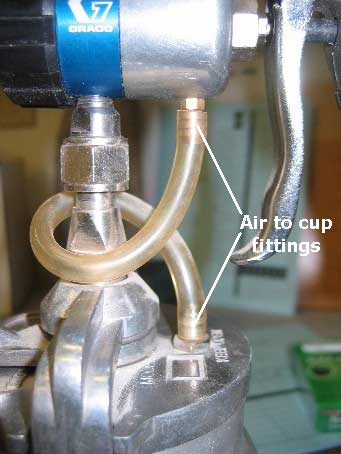Question
I am spraying some cabinet doors with 100% Acylic latex thinned to 20% water and 10% Floetrol, and the paint seems to atomize well with my Fuji 4 stage Tubine and a #4 tip. However, I keep getting sporadic spitting (or poor atomization). Is there something I can do to eliminate this, such as more thinning or more Floetrol?
Forum Responses
(Finishing Forum)
From Paul Snyder, forum technical advisor:
Floetrol is a flow additive, not a thinner. It will help the paint level out after it's sprayed onto the surface, but won't help it atomize better. Add more water, in measured increments, until you get good atomization.
What is your number of seconds? Thin the paint until you hit that viscosity with a combo of Floetrol and water. Is your volume turned up all the way? If you turn the air volume down to stop overspray, you are more prone to spit. Are you filtering the paint well enough? Bottom line, the turbines are going to orange peel or spit because of lower psi, so you have to thin the latex paint up to 30%. Try it very thin and then work your way up. Usually if you spray latex you should count on spraying an additional coat for build. You should also consider moving to a#5 tip, that is what is recommended for latex I believe.
As for heat in the hose, if you already have a whip hose, that should be enough. Put your hand at the end of your hose, and it should be close to air temperature. You need three coats. Once you commit to three coats, you will have no problem psychologically thinning the paint to the needed viscosity. Just be careful of laying it on too thick, it will run much easier than before. If you use less Floetrol, it will dry quickly so you can nail those coats all in one day. The glycol is a retarder, and you should be able to do nearly the same thing with Floetrol, thin with water.
Paint is collecting on the nozzle while you're spraying.
There's a chunk of dried finish in the nozzle.
The air supply to the cup is getting blocked.
Keep a close eye on the nozzle while you're spraying. Paint may be collecting there during longer spray passes. I check it every time I pick up the gun and clean as needed. A toothbrush soaking in a jar of solvent comes in handy for this. Don't scrape the dried finish off or you'll scratch the nozzle (or air-cap).
Sometimes a chunk of dried finish gets in the fluid passage, especially if you don't disassemble the gun and run a brush through the fluid passage from both ends when you clean it; flushing isn't good enough. The chunk blocks the fluid flow at the nozzle and pulling the trigger a few times makes it work briefly.
On your gun, there may be an air supply hose to the cup similar to the one in the picture below. If you tilt the gun too far, the finish in the cup can get into that air hose or the fittings and block the air supply to the cup. That'll make the gun spray erratically; usually it sprays for a short time and then stops if the hose is blocked completely.
A bad seal at the cup lid can also cause erratic spraying, but your gun is new so that shouldn't be a problem unless the seal has dried finish on it. A loose nozzle is another possible source.
